Ranking the greatest position players in baseball history: Nos. 80-61
Throughout the month of January, a cast of editors from theScore will share their rankings of the greatest teams, performances, pitchers, and position players in baseball history. This list focuses on the greatest position players:
100-81 | 80-61 | 60-41 | 40-21 | 20-1
Voter list:
- James Bisson, National Sports Editor
- Brandon Wile, Senior MLB Editor
- Jonah Birenbaum, MLB News Editor
- Michael Bradburn, MLB News Editor
- Jason Wilson, MLB News Editor
- Bryan Mcwilliam, MLB News Editor
- Simon Sharkey-Gotlieb, MLB News Editor
- Dylan Perego, News Editor
- Josh Wegman, News Editor
80. Frankie Frisch, 2B

| AVG | R | HR | RBI | SB | OPS |
|---|---|---|---|---|---|
| .316 | 1532 | 105 | 1244 | 419 | .801 |
One of his era's premier infielders, "The Fordham Flash" played exactly 1,000 games for John McGraw's Giants from 1919-26 before embarking on an 11-year run of stardom with the Cardinals. All told, his teams won eight pennants (four each in New York and St. Louis) and four World Series titles (two with each team, including one as the Cardinals' player-manager in 1934). A scrappy switch-hitter, Frisch led the league in stolen bases three times, recorded three 200-hit seasons, and scored over 100 runs seven times. When he retired in 1937, only Eddie Collins and Rogers Hornsby - the man who was traded for Frisch in 1926 - had more career hits among second basemen. -- Sharkey-Gotlieb
79. Ed Delahanty, OF
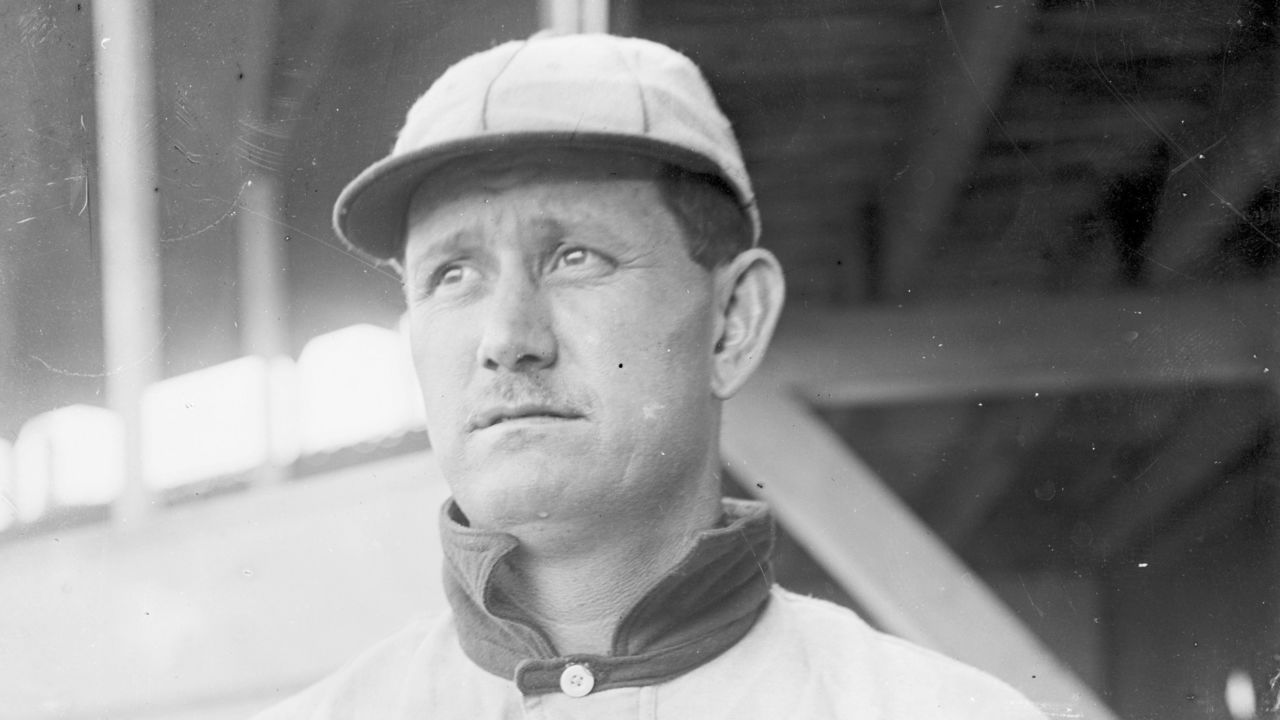
| AVG | R | HR | RBI | SB | OPS |
|---|---|---|---|---|---|
| .346 | 1600 | 101 | 1466 | 456 | .917 |
While Delahanty enjoyed a shorter career than most in his era, the outfielder's 10-year peak spent primarily with the Phillies was incredible. He wrapped up the 1894, 1895, and 1899 campaigns with a batting average north of .400, and posted a combined OPS just south of 1.000 from 1893-1902. Delahanty even led the league in on-base percentage and slugging as a 34-year-old in the final year of that stretch before his untimely death in 1903 when he went over Niagara Falls. -- Bradburn
78. David Ortiz, DH

| AVG | R | HR | RBI | SB | OPS |
|---|---|---|---|---|---|
| .286 | 1419 | 541 | 1768 | 17 | .931 |
Ortiz is right up there with Edgar Martinez and Frank Thomas on the Mount Rushmore of designated hitters. Not only does "Big Papi" have all the regular-season numbers to be considered an all-time great, but the postseason is where he truly left his mark. He owns a .947 OPS in 85 career playoff games, including an insane slash line of .455/.576/.795 across 14 World Series games, and three rings. -- Wegman
77. Harry Heilmann, OF/1B
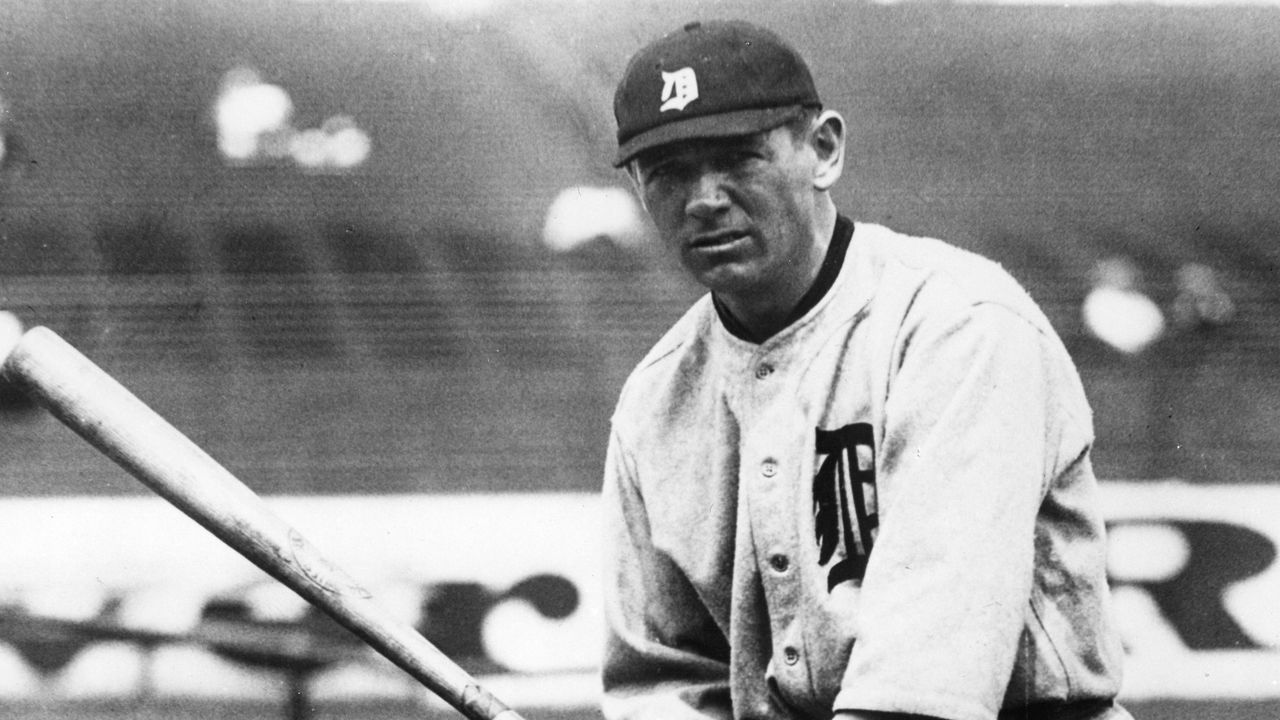
| AVG | R | HR | RBI | SB | OPS |
|---|---|---|---|---|---|
| .342 | 1291 | 183 | 1543 | 113 | .930 |
Despite never winning an MVP award, Heilmann was a force, particularly from 1921-30 during which he hit .367 with a 1.012 OPS. He finished with a batting average above .390 on four occasions, each time taking home the league's batting title. His best year came in 1923 when he outshined teammate Ty Cobb by hitting .403 with 44 doubles, 11 triples, and 18 home runs. -- Wilson
76. Barry Larkin, SS
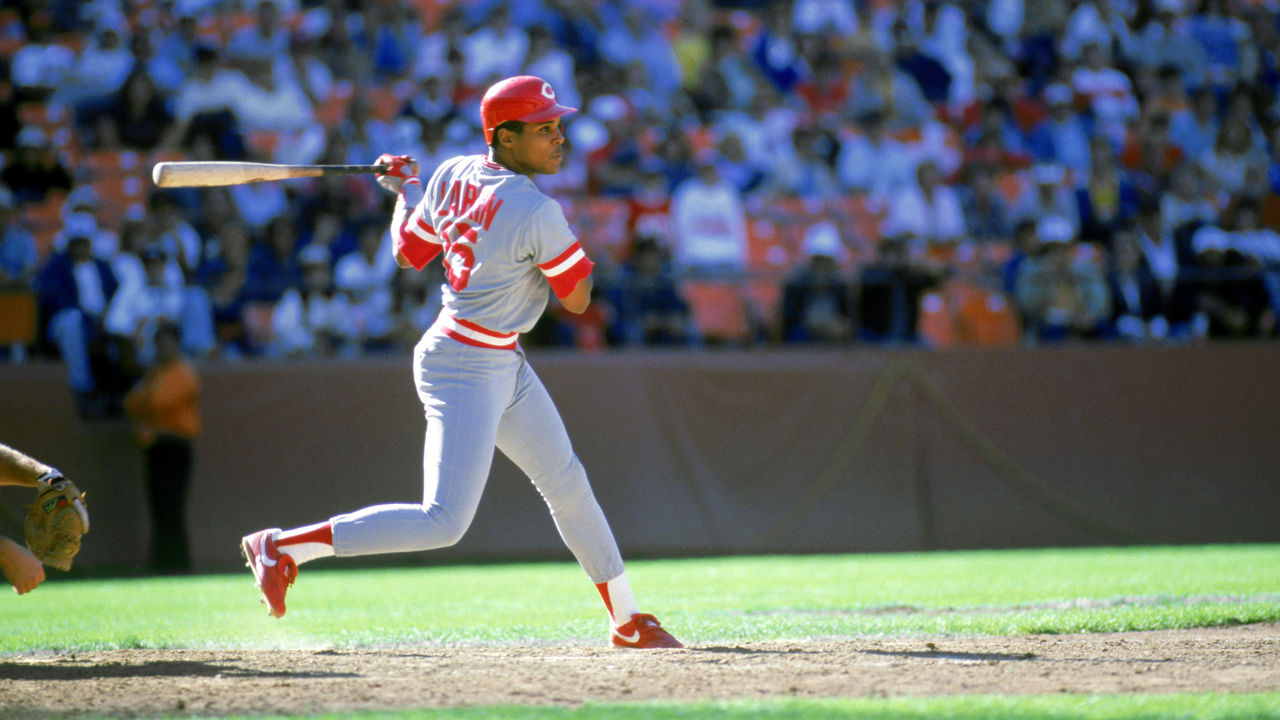
| AVG | R | HR | RBI | SB | OPS |
|---|---|---|---|---|---|
| .295 | 1329 | 198 | 960 | 379 | .815 |
Larkin was one of the premier shortstops of his generation. A rare five-tool talent, he won nine silver sluggers, three gold gloves, and the 1995 MVP award. Oddly enough, the season after his MVP campaign was even better, as Larkin slashed .298/.410/.567 with 33 homers, 89 RBIs, and 36 stolen bases. He was a career .338 hitter in the postseason and won a ring in 1990. -- Wegman
75. Bobby Grich, 2B

| AVG | R | HR | RBI | SB | OPS |
|---|---|---|---|---|---|
| .266 | 1033 | 224 | 864 | 104 | .794 |
Injuries impacted Grich's career immensely, and kept him out of the Hall of Fame. When the second baseman was on the field, though, he certainly made an impact. Across 17 seasons, he was a six-time All-Star, a four-time Gold Glove winner, and set the major-league record with a .997 fielding percentage in 1985, breaking the previous record he'd established 12 years earlier. Despite missing considerable time, Grich ranks 61st in career WAR, according to Baseball Reference, more than Hall of Famers Alan Trammell, Barry Larkin, Gary Carter, and Ryne Sandberg. -- Wile
74. Luke Appling, SS
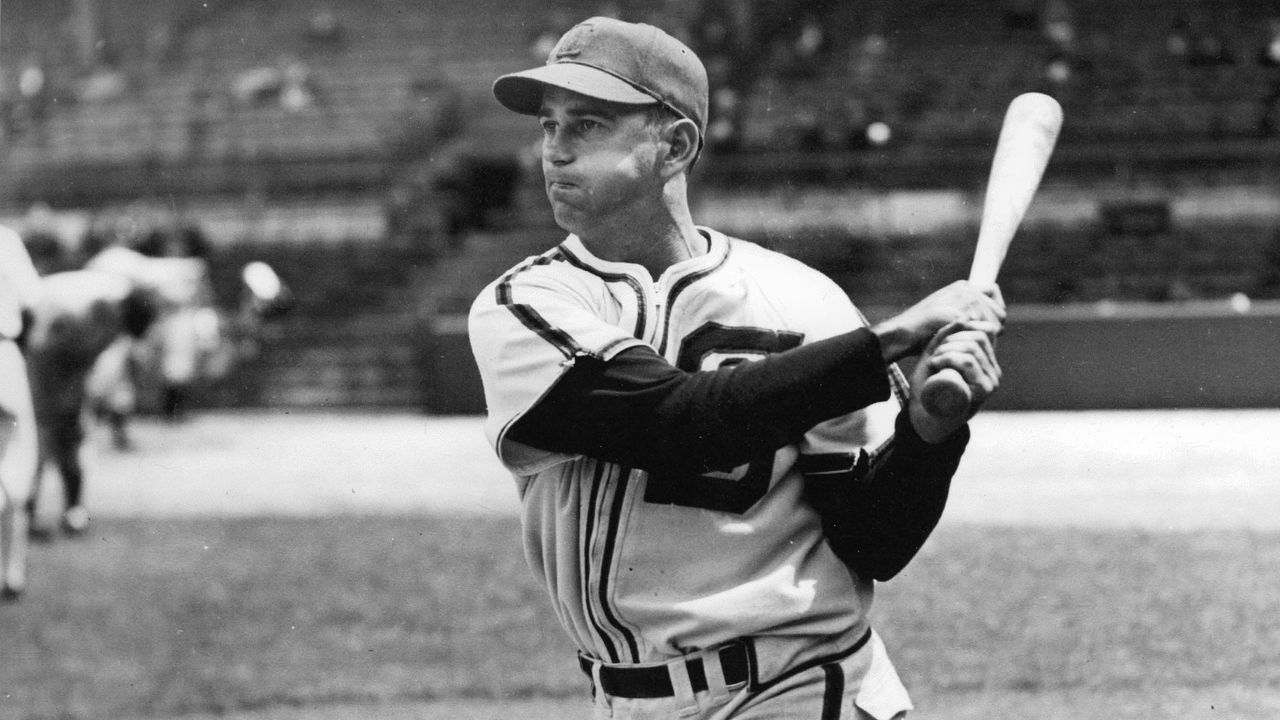
| AVG | R | HR | RBI | SB | OPS |
|---|---|---|---|---|---|
| .310 | 1319 | 45 | 1116 | 179 | .798 |
Appling certainly didn't make a career out of the long ball. Across 20 big-league seasons, the Hall of Fame shortstop hit just 45 home runs - or one every 197 at-bats. Getting on base, however, was no issue. Appling boasts a career .310/.399/.398 slash line with 587 extra-base hits and just 528 strikeouts. In 1936, he hit .388 with a .474 on-base percentage and drove in 128 runs despite hitting just six homers. For his career, he was a seven-time All-Star and two-time AL batting champ. -- Wile
73. Edgar Martinez, DH/3B
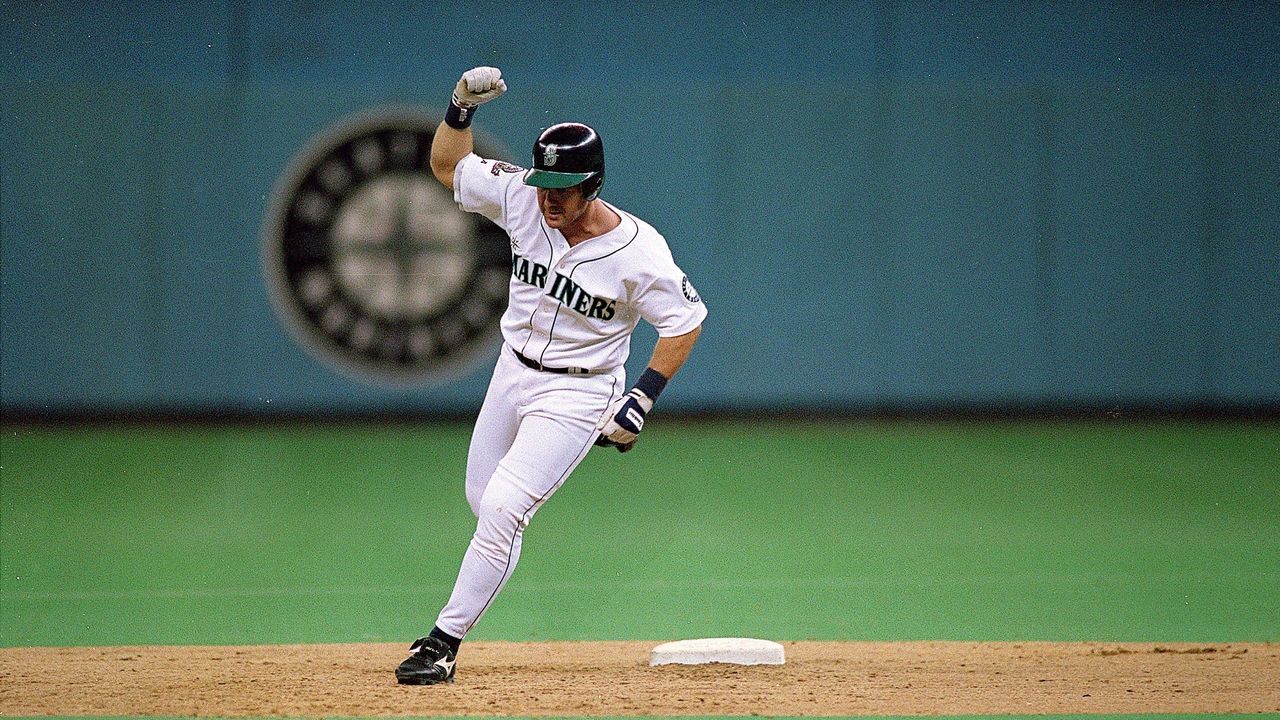
| AVG | R | HR | RBI | SB | OPS |
|---|---|---|---|---|---|
| .312 | 1219 | 309 | 1261 | 49 | .933 |
Martinez was a professional hitter. Serving as a DH in more than half of his 2,055 major-league games over 18 seasons, he slashed .312/.418/.515 with 309 home runs and 514 doubles. He produced eight different seasons in which he finished with 5.0 or more WAR despite not playing defensively. In addition, Martinez was a seven-time All-Star, a five-time Silver Slugger, a two-time AL batting champ, and the 2000 AL RBI leader. -- Wile
72. George Davis, SS
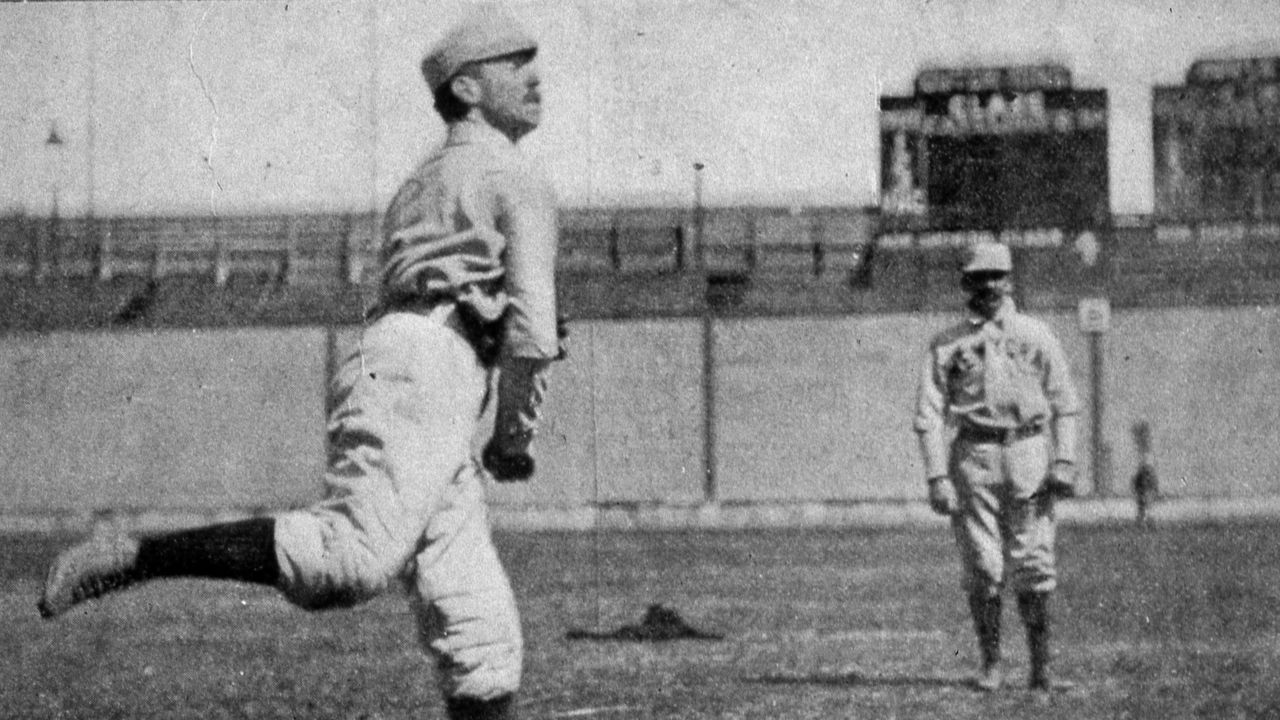
| AVG | R | HR | RBI | SB | OPS |
|---|---|---|---|---|---|
| .295 | 1545 | 73 | 1440 | 619 | .767 |
At the turn of the century, there weren't many players better than Davis, a versatile, switch-hitting speedster who hit .332 from 1893 through 1901 - ranking sixth in the majors in WAR over that span - while also averaging 40 stolen bases per season. Five years later, in what proved to be the last productive season of his career, Davis propelled the Chicago White Sox to their first-ever championship, hitting .308 with six RBIs to help sink in the Cubs in the 1906 World Series. -- Birenbaum
71. Paul Waner, OF
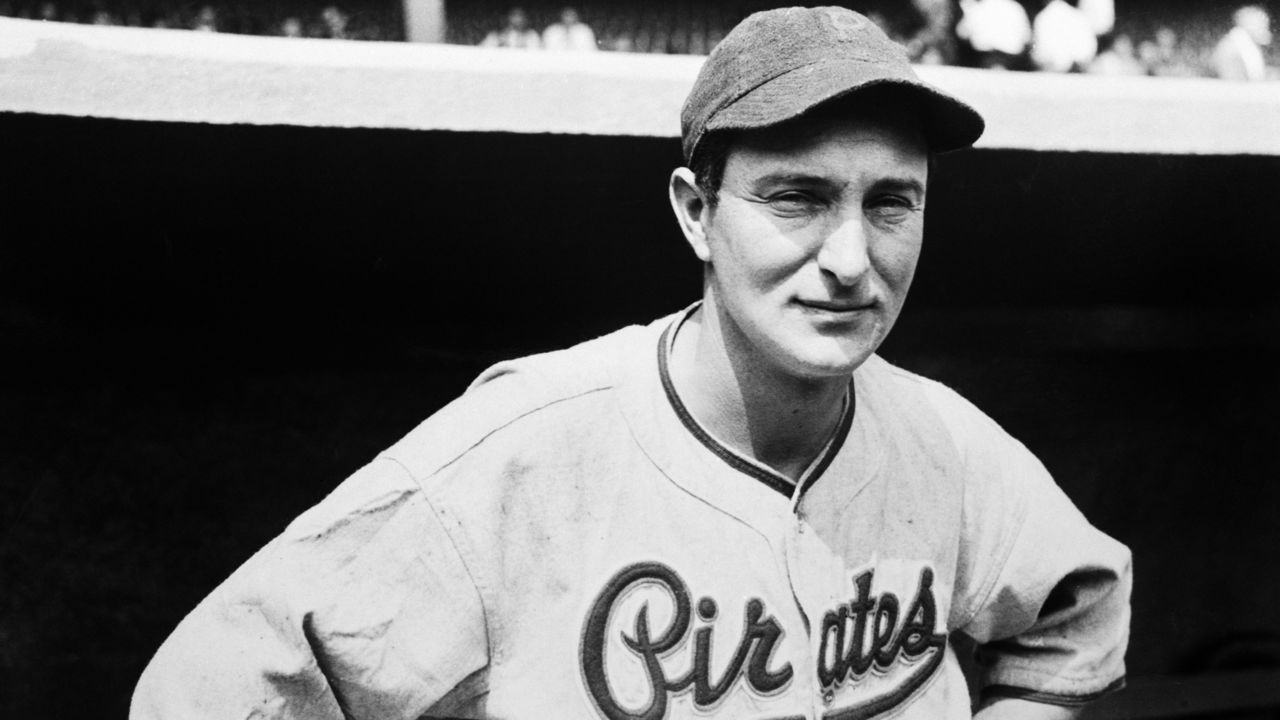
| AVG | R | HR | RBI | SB | OPS |
|---|---|---|---|---|---|
| .333 | 1627 | 113 | 1309 | 104 | .878 |
Paul "Big Poison" Waner was a rock from the moment he stepped foot on a big-league diamond in 1926 as a 23-year-old. For 12 seasons, he was never worth fewer than 4.3 wins above replacement, and thrice exceeded 7.0. He won the NL MVP in his sophomore season when he led the league in hits (237), triples (22), RBIs (131), and batting average (.380). -- Wilson
70. Scott Rolen, 3B
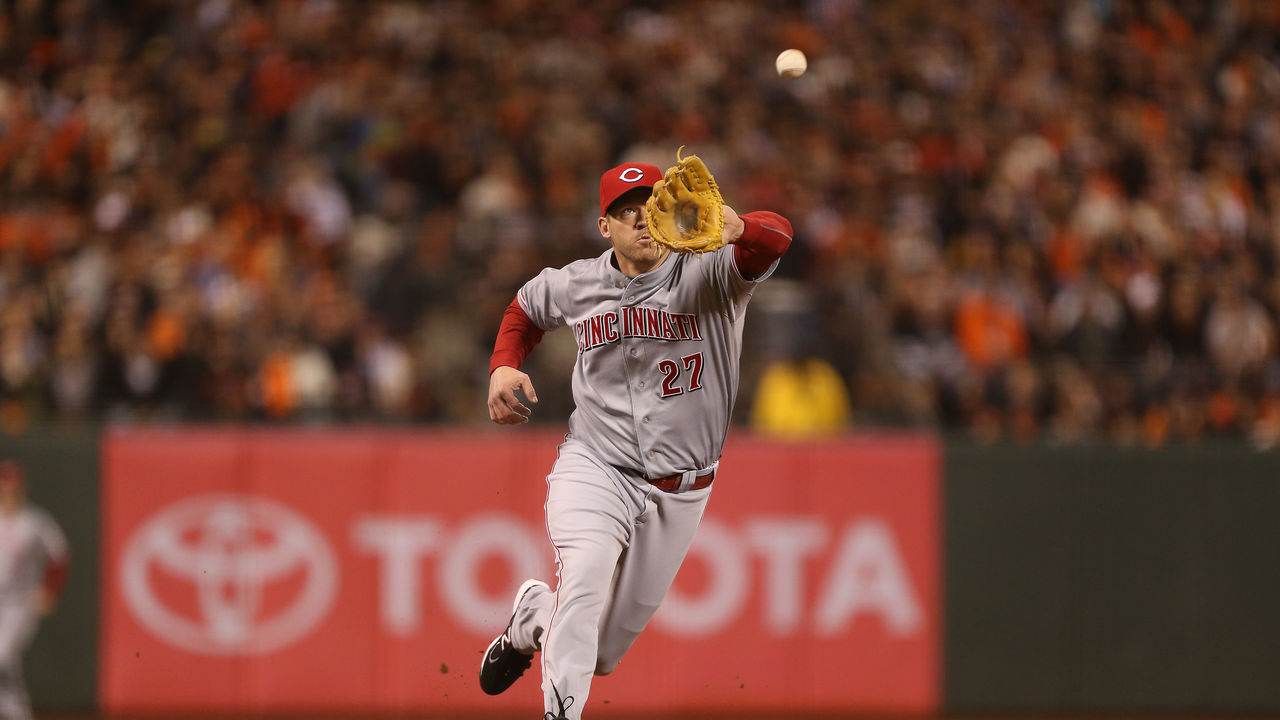
| AVG | R | HR | RBI | SB | OPS |
|---|---|---|---|---|---|
| .281 | 1211 | 316 | 1287 | 118 | .855 |
Rolen, a first-time name on this year's Hall of Fame ballot, may struggle to stay above the necessary 5 percent it takes to remain on future ballots, but let's be real, he was one of the best third baseman of his era. Rolen was a seven-time All-Star, an eight-time Gold Glove winner, and was worth 70.1 fWAR (10th all time) during his 17-year career. His 114 defensive runs saved and 127.9 in Fangraphs defense both rank second all time among third basemen, behind only Adrian Beltre. -- Mcwilliam
69. Yogi Berra, C
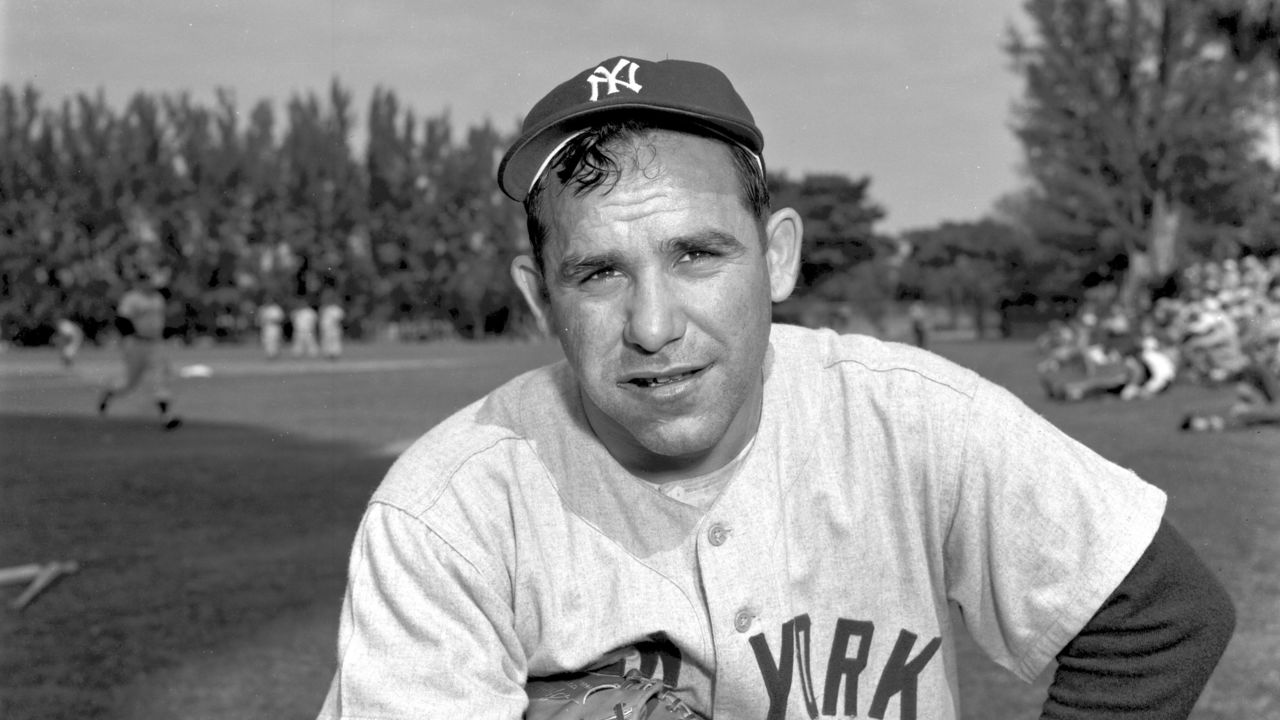
| AVG | R | HR | RBI | SB | OPS |
|---|---|---|---|---|---|
| .285 | 1175 | 358 | 1430 | 30 | .830 |
One of the most recognizable faces and personalities in baseball history, the impression Berra left on the game is nothing short of legendary. He made a name for himself on the field as one of only five players in history to win three or more AL MVP awards, and appeared in a whopping total of 22 World Series, winning 13 of them with the New York Yankees. His immortal wit transcended sports, and Berra was posthumously awarded the Presidential Medal of Freedom by former United States President Barack Obama in 2015, two months after his death. - Perego
68. Willie McCovey, 1B

| AVG | R | HR | RBI | SB | OPS |
|---|---|---|---|---|---|
| .270 | 1229 | 521 | 1555 | 26 | .889 |
Once dubbed the "scariest hitter in baseball" by the legendary Bob Gibson, McCovey would likely be the most beloved player in Giants history were it not for his pal Willie Mays, who spent more than a decade hitting in front of him. In 1959, at just 21, McCovey took home the NL Rookie of the Year award despite playing only 52 games - he was that good - and "Big Mac" never looked back, racking up six All-Star nods and an MVP award (while also leading his league in homers three times) over his 22 years in the bigs. -- Birenbaum
67. Eddie Murray, 1B

| AVG | R | HR | RBI | SB | OPS |
|---|---|---|---|---|---|
| .287 | 1627 | 504 | 1917 | 110 | .836 |
After winning Rookie of the Year in 1977, Murray went on to have a storied career. He finished second in MVP voting in back-to-back years - losing to Robin Yount and teammate Cal Ripken in 1982 and 1983, respectively - while his resume includes three Gold Gloves, a Silver Slugger, and 504 home runs. At the time of his retirement, the first baseman had become the 15th player to ever surpass the 500-homer plateau. As an all-time great despite no MVPs, the "Steady Eddie" nickname was certainly earned. -- Bradburn
66. Carlos Beltran, OF
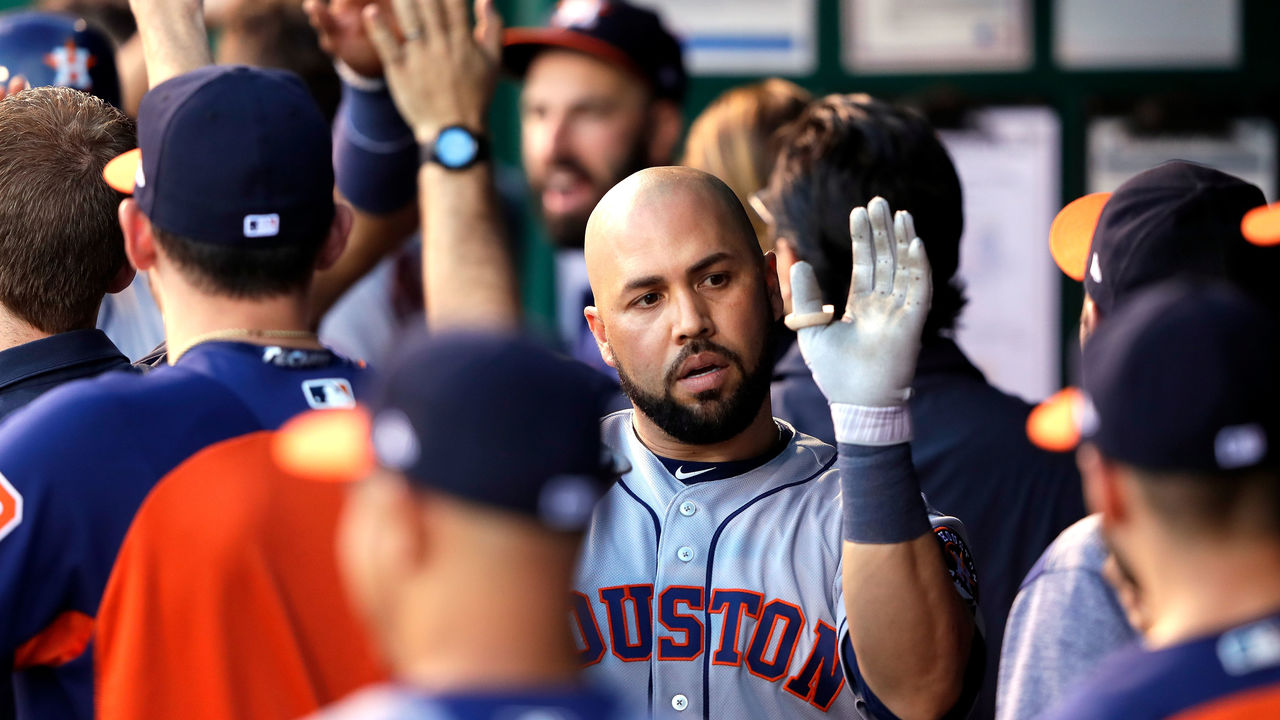
| AVG | R | HR | RBI | SB | OPS |
|---|---|---|---|---|---|
| .279 | 1582 | 435 | 1587 | 312 | .837 |
The recently retired Beltran is destined for a plaque in Cooperstown after a career spanning 20 years that included nine All-Star appearances, three Gold Gloves, and two Silver Sluggers. "Senor Octubre" also owns a perfect 11-for-11 mark in stolen-base attempts in the postseason, along with some impressive numbers in big games. Through his first 50 playoff contests, the switch-hitting outfielder posted a .335/.449/.693 slash line in 215 plate appearances. Still, it took until his final career game to finally claim his first World Series ring as part of a historic run with the Astros. -- Bradburn
65. Arky Vaughan, SS
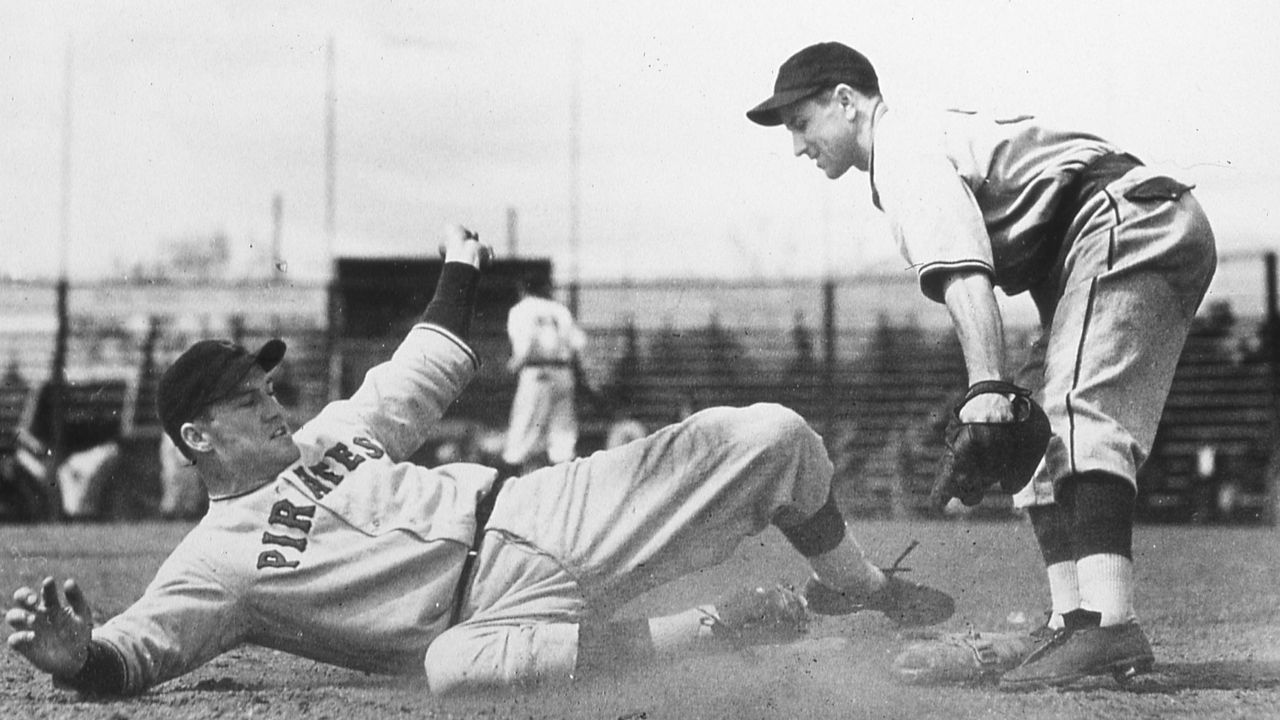
| AVG | R | HR | RBI | SB | OPS |
|---|---|---|---|---|---|
| .318 | 1173 | 96 | 926 | 118 | .859 |
Vaughan was one of the most underrated infielders of the 1930s, earning nine consecutive All-Star nods while leading the league in OBP three times in that span. His 1935 campaign saw him establish career highs in average (.385), OBP (.491), and OPS (1.098), earning him a third-place showing in MVP balloting. Vaughan doesn't get the fanfare of the more prolific hitters of his era, but make no mistake - he was a nightmare for opposing hurlers. -- Bisson
64. Roger Connor, 1B

| AVG | R | HR | RBI | SB | OPS |
|---|---|---|---|---|---|
| .316 | 1620 | 138 | 1323 | 244 | .883 |
While he may not be a household name, Connor's footprint on the early stages of the game is undeniable. He was one of the game's earliest sluggers, becoming the all-time home run king by belting 138 homers prior to the turn of the century. That mark stood until Babe Ruth came along, but Connor's impact on baseball extended further than that, as he was among a group that left the New York Gothams in 1890 to help start the New York Giants, a franchise that still exists today. - Perego
63. Johnny Mize, 1B

| AVG | R | HR | RBI | SB | OPS |
|---|---|---|---|---|---|
| .312 | 1118 | 359 | 1337 | 28 | .959 |
Mize was one of his generation's most incredible hitters, leading the National League in OPS for three consecutive seasons and driving in 100-plus runs for six straight years before leaving the sport to perform military service. He returned in 1946 and the power came back with him - Mize led the majors in home runs in 1947 and '48, solidifying his status as one of the greatest players of the decade despite missing three whole seasons. -- Bisson
62. Ernie Banks, SS/1B
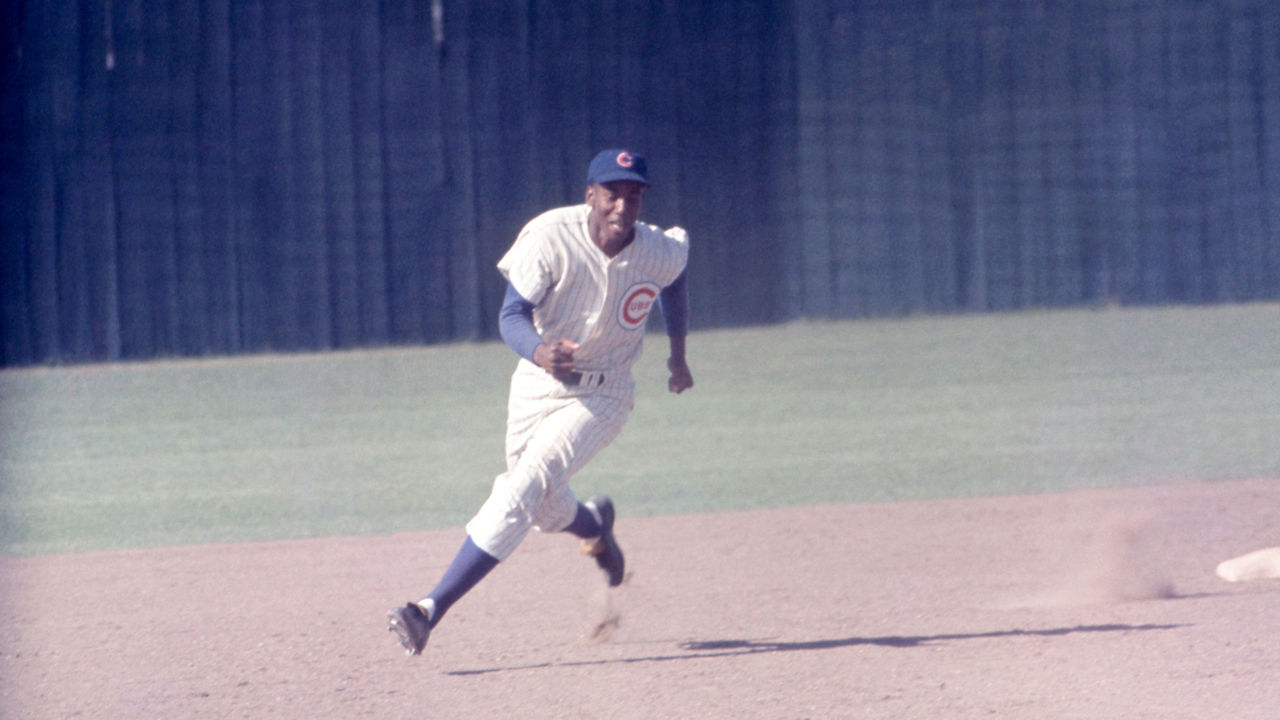
| AVG | R | HR | RBI | SB | OPS |
|---|---|---|---|---|---|
| .274 | 1305 | 512 | 1636 | 50 | .830 |
Over the 141-year history of Chicago's National League franchise, only one player has been honored with the monicker "Mr. Cub" - and trust us when we tell you that Banks earned every letter. The durable infielder won back-to-back MVP awards in the late 1950s, paced the majors in home runs and RBIs on two separate occasions, and played at least 150 games 11 times. He remains the Cubs' all-time leader in at-bats, extra-base hits, and total bases. -- Bisson
61. Gary Carter, C

| AVG | R | HR | RBI | SB | OPS |
|---|---|---|---|---|---|
| .262 | 1025 | 324 | 1225 | 39 | .773 |
"The Kid" was all right. Carter slugged his way into the hearts of Montreal Expos fans in the 1980s, earning 10 consecutive All-Star nods while finishing in the top 10 in National League MVP balloting on four occasions. And while the back end of his career was fraught with injury, inconsistency, and plenty of moving around, Carter did make his way back to Montreal for one final "au revoir" as a 38-year-old in 1992. -- Bisson
(Photos courtesy: Getty Images)